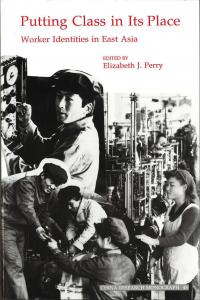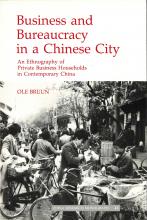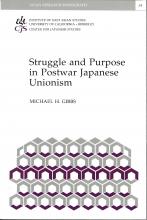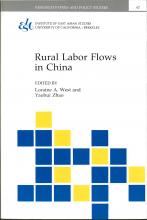Putting Class in Its Place
Putting Class in Its Place
Elizabeth J. Perry, ed.
The studies in this volume dismiss the myth of the quiescent East Asian worker. Worker activism is not fully explained by familiar models of class consciousness; educational aspirations, family pressures, gender roles, state directives, native-place origins, and clientelist networks have proven as decisive as class consciousness in shaping the behavior of East Asian workers. These workers appear to have been more consumed with the politics of "place" than with a "class" struggle to further their interests.
As a nonprofit academic press, we need your support to publish our books. Your gift can help us make more of our titles available as e-books. DONATE NOW
Title information
The studies in this volume dismiss the myth of the quiescent East Asian worker. These workers appear to have been more consumed with the politics of "place" than with a "class" struggle to further their interests.
Contributors:
Hill Gates is Senior Research Associate, Institute for International Studies, Stanford University.
Andrew Gordon is Professor of History, Department of History, Harvard University.
Gail Hershatter is Professor of Women's Studies, University of California, Santa Cruz.
Hsin-Huang Michael Hsiao is Research Fellow, Institute of Sociology, and Associate Director, Program for Southeast Asian Area Studies, Academia Sinica; and Professor of Sociology, National Taiwan University, Taipei, Taiwan.
Hagen Koo is Professor of Sociology, University of Hawai'i at Manoa.
Elizabeth J. Perry is Professor of Political Science, University of California, Berkeley.
Andrew G. Walder is Professor of Sociology, Stanford University.
Nai-teh Woo is Associate Research Fellow, Institute of Sociology, Academia Sinica, Taipei, Taiwan.
Elizabeth J. Perry, ed.
Elizabeth J. Perry is Henry Rosovsky Professor of Government and Director of the Harvard-Yenching Institute. She has also served as professor of political science at the University of California, Berkeley.
B.A. Hobart and William Smith College, Ph.D. University of Michigan
Putting Class in its Place
Acknowledgements – vii
Contributors – ix
Introduction: Putting Class in Its Place: Bases of Worker Identity in East Asia – 1
Elizabeth J. Perry
1. Conditions for the Disappearance of the Japanese Working-Class Movement – 11
Andrew Gordon
2. Work, Culture, and Consciousness of the Korean Working Class – 53
Hagen Koo
3. Class Identity without Class Consciousness? Working-Class Orientations in Taiwan – 77
Nai-teh Wu
4. Changing Literary Images of Taiwan’s Working Class – 103
Hsin-Huang Michael Hsiao
5. Owner, Worker, Mother, Wife: Taibei and Chengdu Family Businesswomen – 127
Hill Gates
6. The Chinese Cultural Revolution in the Factories: Party-State Structures and Patterns of Conflict – 167
Andrew G. Walder
7. Chinese Sex Workers in the Reform Period – 199
Gail Hershatter
8. Regional Identity, Labor, and Ethnicity in Contemporary China – 225
Emily Honig
Index – 245
|
JOURNAL REVIEWS |
|
"Most of the contributors to this volume have published books on workers in East Asia. For readers familiar with these studies, these chapters extend the work. They will also be useful for readers who only wish to sample the growing literature on the lives and struggles of workers during industrialization in the region.... Some of the chapters, particularly those by Koo and Gates, should be required reading in all sociology courses dealing with East Asia." ~Graeme Lang, City University of Hong Kong, in Pacific Affairs (http://www.jstor.org/stable/2761434) |
|
"A very talented group of authors has produced a rich set of eight papers....Taken together these contributions help to dispel any notion of the uniformity of the nature and experience of working class life in East Asian societies....Future writing about workers throughout East Asia will refer to this book as an important benchmark." ~Martin King Whyte, in China Quarterly (http://www.jstor.org/stable/655358) |
|
"One of the strengths of this volume derives from the diversity of its contributors, who represent an array of social science disciplines encompassing history, sociology, anthropology, political science, and women's studies, and, as such, bring to their research divergent methodologies and theoretical frameworks....Putting Class in Its Place is a pioneering work, and, as a consequence, it raises more questions than it answers. It is, moreover, a pathbreaking achievement that deserves to be read not just by those interested in labor issues in East Asia but by those who are interested in questions of worker identity in a generally comparative context." ~Jeanne L. Wilson, Wheaton College, in China Review International (http://www.jstor.org/stable/23729119) |






